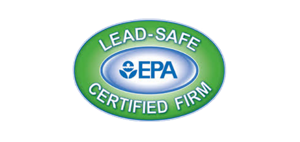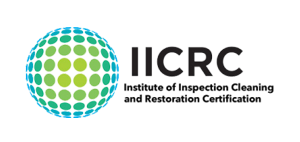Have you ever thought about the impact of fire damage? It’s more than what you see – there’s a lot going on. This includes burn marks, smoke, soot, and water damage from putting out the fire. Knowing about fire damage is important. It helps with insurance and makes us better at keeping properties safe and fixing them after a fire.
Key Takeaways
- Fire damage includes burn, smoke, soot, and water damage.
- Proper fire damage restoration involves addressing all these types.
- Understanding fire damage is essential for effective insurance claims.
- Fire damage effects influence property maintenance strategies.
- Fire safety and prevention strategies are critical for minimizing risks.
Introduction to Fire Damage
Fire damage is a significant issue for property owners. It brings immediate destruction and long-term problems. These can harm both the property and the business inside.
Dealing with fire damage quickly and effectively is critical. An in-depth assessment is needed to figure out the damage. This paves the way for a restoration plan.
There are different types of fire damage. This includes damage to the building structure, electrical systems, and appearances like paint. Knowing about these effects is key to a complete restoration and keeping the property strong for the future.
Types of Fire Damage
Fire damage falls into different types, each needing its own fix. Categories include burn damage, smoke damage, soot damage, and water damage from fire. Knowing these helps in a full recovery.
- Burn Damage: It’s the most direct fire effect, harming a building’s strength. Acting fast is key to stop it getting worse.
- Smoke Damage: Smoke spreads fast, hurting air quality and health. Professionals are usually needed to fully clean up.
- Soot Damage: Soot, from fires, harms surfaces and fabrics, leaving tough stains. It takes special cleaning to fix soot damage.
- Water Damage from Fire: Extinguishing fires can flood a space, damaging structures and promoting mold. This can weaken a building further.
Common Causes of Fire Damage in Properties
Knowing the reasons behind causes of fire damage is key to stopping fires and staying safe. Fires can start in homes and businesses. Common sources are electrical fires, cooking fires, and smoking fires.
- Electrical Fires: These can happen because of old wiring, too many things plugged in, or broken devices. Getting things checked often can stop these fires.
- Cooking Fires: Mostly found in kitchens, these fires come from food left cooking, hot oil, or bad appliances. Be careful when cooking and have smoke alarms. This makes things safer.
- Smoking Fires: Starting from not putting out cigarettes properly, they can easily catch other things on fire. Having areas just for smoking and not throwing cigarettes away carelessly is important.
Other big causes of fire damage are problems with heaters, setting fires on purpose, and natural fires. Each of these needs special steps to keep them from happening and to act quickly if they do.
What is Fire Damage?
The effect of a fire on a property can be huge. It impacts the look and safety of the building. Immediate attention is needed for structural damage, which poses risks. This often includes weakened beams and supports.
Smoke and soot can cause cosmetic damages like black walls and ceilings. These signs tell us about deeper issues. A professional assessment is crucial to understand the full picture.
This assessment helps decide if rebuilding is possible. It also determines if demolition is a better option. Dealing with fire damage means also looking out for dangers like mold. Mold can grow from the water used to fight the fire. Cleaning items and materials touched by smoke is essential for health and safety.
Preventing Fire Damage
To prevent fire damage effectively, there must be several steps. This includes using fire suppression systems like sprinklers and alarms. Perform regular checks on electrical and heating systems to stop fire starts.
Teaching staff about fire safety is key. Also, keep smoking spots apart and clean. For places at wildfire risk, it’s important to prepare. This means making areas clear and using plants that resist fire.
- Install and maintain fire suppression systems such as sprinklers and alarms.
- Regularly service electrical and heating systems to prevent malfunctions.
- Conduct thorough fire safety training for all employees.
- Designate and manage smoking areas away from flammable materials.
- Prepare for regional wildfires by creating defensible space and using fire-resistant landscaping.
By using all these tactics together, you greatly lower the chance of fire damage. This makes places safer from fire.
Insurance and Financial Implications of Fire Damage
Fire damage can cause huge financial problems and insurance issues for property owners. It affects properties directly and their business operations. So, knowing how to deal with fire damage insurance claims is crucial.
- Initially, a thorough fire damage assessment is essential. This ensures an accurate record to maximize the potential recovery from fire damage insurance claims.
- Property owners should review their current insurance policies to verify coverage details. This can preempt potential disputes regarding the financial impact of fire damage.
- Professional advice from an insurance agent can offer valuable insights into appropriate coverage options that address the comprehensive financial impact of fire damage.
Smart decisions about fire damage insurance claims can really help lessen the money worries. Knowing about your policy and how to make claims means you’re ready to handle and bounce back from fire damage.
Fire Damage Restoration Process
The fire damage restoration starts with checking how much damage is there. This is important. It helps us know what cleaning and fixing we need to do.
Fixing the area from fire, smoke, and water damage is not simple. We use many different ways to clean up each problem:
- Initial Assessment: We look at the damage to know what we need to do. This includes finding damage we can’t see.
- Removal of Debris: We clean up the burned things and any other waste at the place.
- Smoke Remediation: Smoke and soot are hard to clean. We use special tools and methods to remove them, so the air and surfaces are safe again.
- Water Damage Mitigation: We take out the water from putting out the fire. Then, we dry the area and make sure it’s clean so mold doesn’t start growing.
- Restoration and Repair: We figure out what we can fix and what we need to replace. For some surfaces, we use special cleaning methods, like abrasive blasting, to get them really clean.
Every step is important to bring the place back to how it was before the fire. Using the right fire cleanup methods and making sure there’s no more smoke means we do a thorough job.
Conclusion
Understanding fire damage is crucial for property owners. It’s vital to know about smoke, burn, and water damage. This knowledge helps in dealing with fire aftermath properly. Various damages need different restoration methods, stressing the importance of careful restoration efforts.
Knowing common fire causes like electrical issues and cooking accidents is key. This helps in preventing fires. Installing fire suppression systems and properly maintaining electricals reduce fire risks. These steps are crucial in keeping properties safe.
The cost of fire damage highlights the need for good insurance. By knowing how to handle insurance claims, property owners can ease the financial burden. Ensuring safety during recovery is important. Combining prevention, restoration, and insurance can improve a property’s safety against fires.









